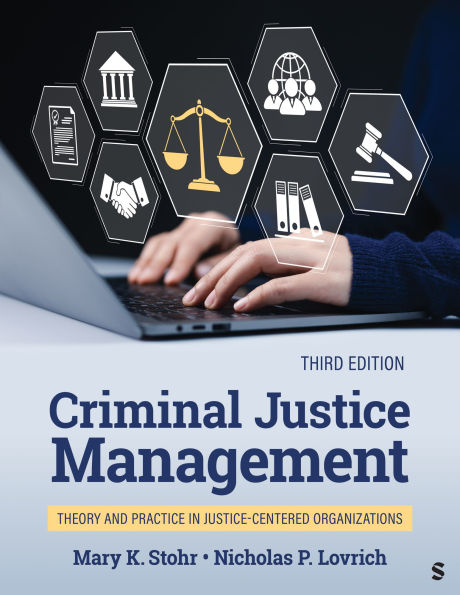All career paths in Criminal Justice require a competent understanding of organizational management. Criminal Justice Management: Theory&Practice in Justice-Centered Organizations bridges the gap between theory and practice for students learning the nuances of managing within the criminal justice field. Stohr and Lovrich offer approachable coverage of developing research, including the importance of Organizational Management, ethical standards, and staff/client interactions. Through examples, research stories, and real experiences from leaders in the field, readers will gain valuable insight into the challenges and opportunities of managing justice-centered organizations. The unique staff/client interaction focus addresses trauma and emotional labor, providing readers with practical tools for implementing a trauma-informed approach and self-care in their own careers.
All career paths in Criminal Justice require a competent understanding of organizational management. Criminal Justice Management: Theory&Practice in Justice-Centered Organizations bridges the gap between theory and practice for students learning the nuances of managing within the criminal justice field. Stohr and Lovrich offer approachable coverage of developing research, including the importance of Organizational Management, ethical standards, and staff/client interactions. Through examples, research stories, and real experiences from leaders in the field, readers will gain valuable insight into the challenges and opportunities of managing justice-centered organizations. The unique staff/client interaction focus addresses trauma and emotional labor, providing readers with practical tools for implementing a trauma-informed approach and self-care in their own careers.

Criminal Justice Management: Theory and Practice in Justice-Centered Organizations

Criminal Justice Management: Theory and Practice in Justice-Centered Organizations
eBook (Third Edition)
Related collections and offers

Product Details
| ISBN-13: | 9781071926529 |
|---|---|
| Publisher: | SAGE Publications |
| Publication date: | 01/13/2026 |
| Sold by: | Barnes & Noble |
| Format: | eBook |
